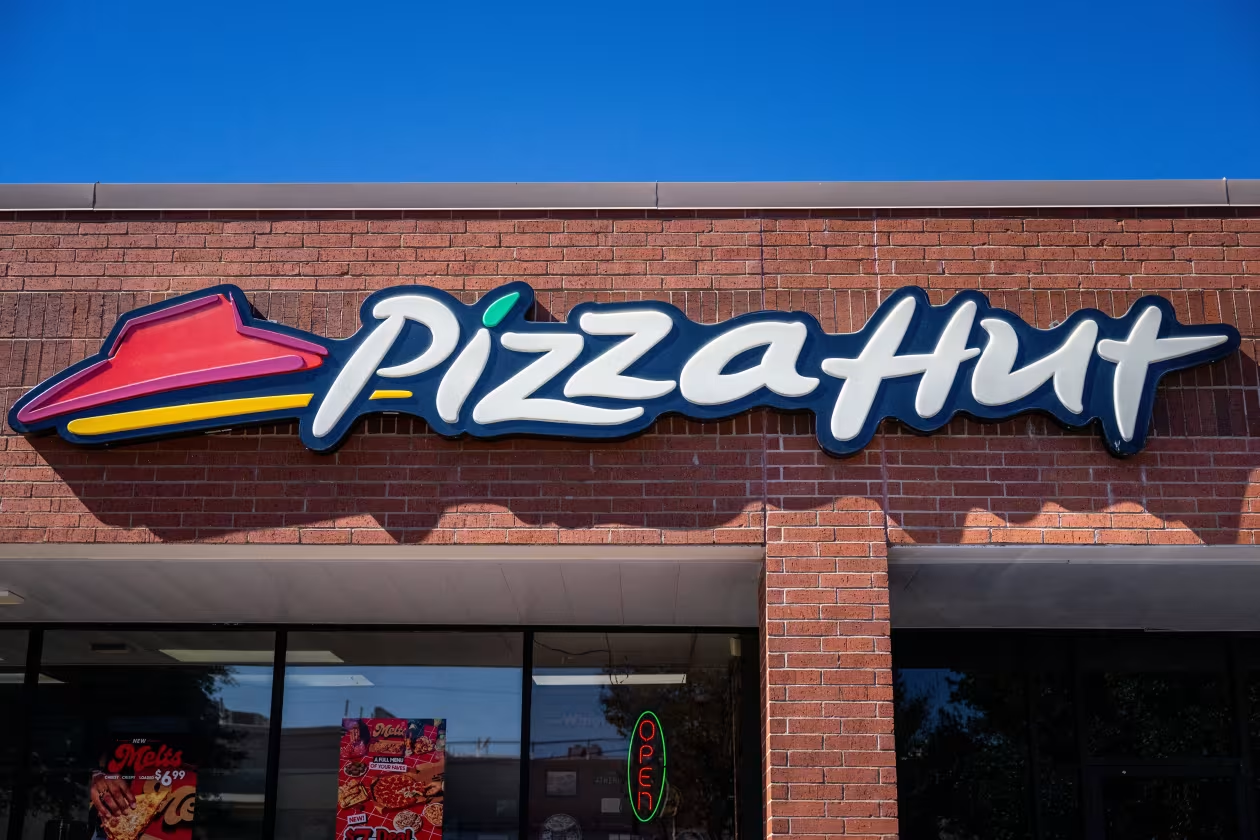A Strategic Review Signals Possible Shake-Up for the Iconic Pizza Brand
Yum! Brands, the global restaurant conglomerate that owns KFC, Taco Bell, and Pizza Hut, is reportedly exploring the potential sale of Pizza Hut after years of sluggish growth and competitive pressure. The company has launched a formal strategic review to evaluate the future of the brand, raising the possibility of a complete or partial divestiture.
The move underscores Yum!’s growing concern over Pizza Hut’s declining market share and lagging performance, particularly in the United States, where the chain has struggled to keep pace with fast-evolving consumer preferences and rising competition from delivery-driven rivals.
A Struggling Brand Within a Successful Empire
While Taco Bell and KFC have consistently delivered strong financial results and global expansion, Pizza Hut has become a weaker link in Yum!’s portfolio. Industry data suggests that Pizza Hut has seen declines in U.S. same-store sales for several consecutive quarters, with performance lagging behind other pizza chains.
In the most recent quarter, Pizza Hut’s U.S. sales reportedly fell by about 5 percent — a continuation of a broader trend that has plagued the chain since before the pandemic. In contrast, Taco Bell and KFC have maintained steady growth and profitability, thanks to aggressive innovation, modernization, and global outreach.
Pizza Hut currently contributes only around one-tenth of Yum!’s total operating profit, a stark difference from its heyday when it was one of the most dominant players in the American fast-food industry.
Challenges That Led to the Review
Several factors have pushed Yum! Brands to consider the sale of Pizza Hut:
- Rising Competition: Pizza Hut has lost ground to fast-growing competitors like Domino’s and Papa John’s, which have embraced technology, delivery apps, and faster service models more effectively.
- Outdated Store Model: Many of Pizza Hut’s dine-in locations continue to underperform as customers increasingly prefer carryout and delivery options. While the company has invested in store redesigns, progress has been slow.
- Shifting Consumer Habits: Younger consumers in particular have gravitated toward value-driven and digital-first dining experiences, leaving traditional casual dining chains struggling to stay relevant.
- Cost Pressures: High inflation, increased food costs, and rising wages have also squeezed profit margins, making it harder for Pizza Hut to sustain its pricing strategy.
Executives within Yum! reportedly believe that Pizza Hut may have greater flexibility and a clearer strategic direction if it operates independently or under new ownership that can focus solely on the brand’s turnaround.
Possible Scenarios
Yum!’s strategic review includes multiple potential paths. One option is a complete sale of the Pizza Hut brand to a private equity firm or another food conglomerate. Another possibility is a partial divestiture — such as selling certain regional operations or international franchises — while maintaining a minority stake in the global brand.
The company could also explore a spin-off, allowing Pizza Hut to become a standalone, publicly traded entity. Such a move would give the chain more autonomy while freeing Yum! from the responsibility of managing a struggling business.
Although Yum! has not confirmed a timeline for its decision, analysts expect that a conclusion could be reached within the next year, depending on market conditions and investor interest.
Industry Implications
A sale of Pizza Hut would mark a significant moment in the history of the fast-food industry. The brand, founded in 1958, was once synonymous with family dining and pizza innovation. It pioneered many industry trends, including online ordering and pan pizza, but has since struggled to retain its leadership as the market became increasingly competitive.
For Yum! Brands, divesting Pizza Hut could allow the company to focus more on its faster-growing businesses — especially Taco Bell, which has seen strong global expansion, and KFC, which remains a dominant player in Asia and other emerging markets.
For Pizza Hut itself, a change in ownership could bring new opportunities. A fresh investment strategy might accelerate digital transformation, expand delivery networks, and modernize its store formats to align with customer preferences. However, success would depend heavily on the vision and resources of new owners.
Analysts Weigh In
Industry analysts have described the potential sale as both a financial and symbolic turning point for Yum! Brands. While it may make business sense, it would also mark the end of an era for one of the company’s founding brands.
Some experts suggest that selling Pizza Hut could unlock value for shareholders and simplify Yum!’s business portfolio. Others warn that a divestiture could weaken the company’s global brand mix, given Pizza Hut’s strong international recognition and loyalty in markets such as Asia and the Middle East.
Despite its struggles in the U.S., Pizza Hut still has a large global footprint with tens of thousands of outlets, many of which continue to perform well. This international strength could attract potential buyers looking for established scale and long-term market potential.
The Road Ahead
Regardless of the final decision, Yum! Brands’ review of Pizza Hut signals a new phase in the fast-food industry — one where heritage brands must evolve rapidly to keep up with digital disruption, delivery innovation, and changing dining culture.
For now, Pizza Hut continues to operate normally, but the months ahead could determine whether it remains part of Yum!’s portfolio or begins a new chapter under different leadership. Either way, the future of one of the world’s most iconic pizza chains appears to hinge on its ability to rediscover the recipe for modern relevance.
















Leave a Reply